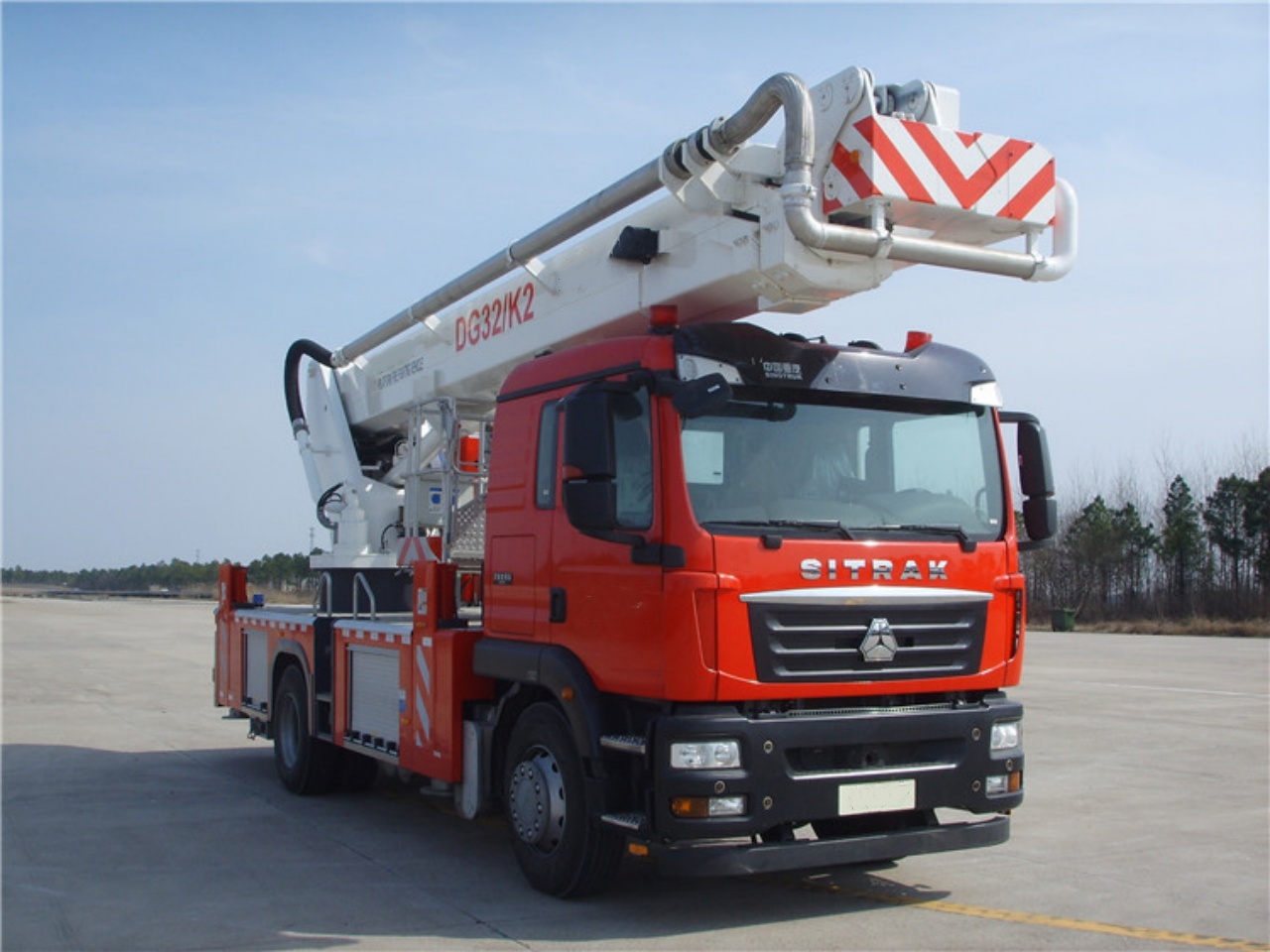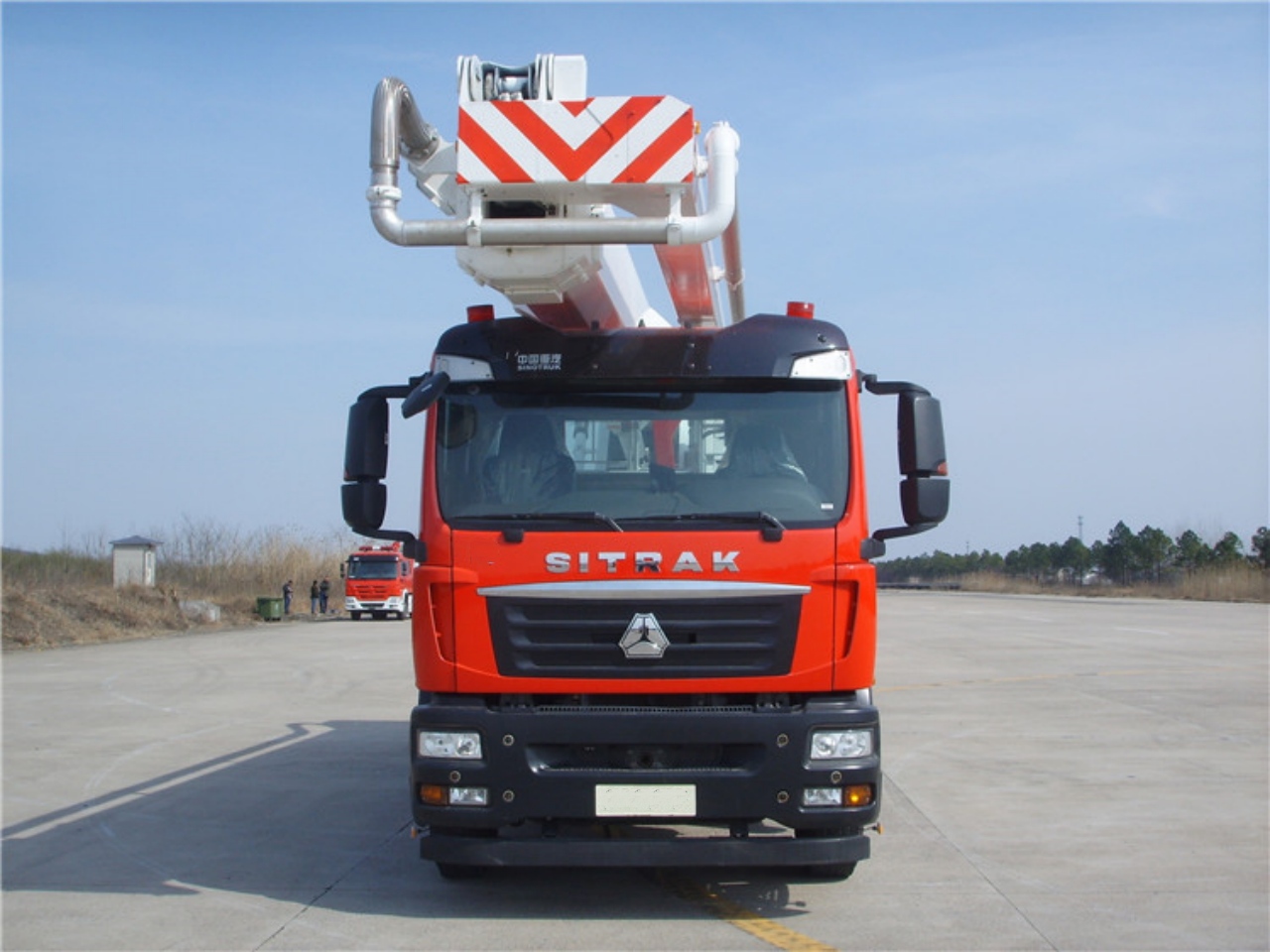The fire truck, an iconic symbol of emergency response, is a mobile toolbox packed with life-saving equipment. Among the most visible and vital of these tools are the ladders. They reach towards smoke-filled windows, bridge gaps, and provide stable platforms high above the ground. But not all fire truck ladders are the same. They vary significantly in size, type, and purpose, forming a critical system designed to overcome the vertical challenges encountered in firefighting and rescue operations. Understanding the different types of ladders carried on a fire truck reveals much about the diverse demands placed on firefighters.
Broadly, ladders on fire apparatus fall into 2 main categories: Aerial Ladders (permanently mounted to the truck) and Ground Ladders (portable ladders carried on the truck).
1. Aerial Apparatus: Reaching New Heights
When people picture a fire truck ladder, they usually envision the large, mechanically operated aerial ladder or platform mounted on the vehicle itself. These are complex pieces of engineering designed for reaching significant heights quickly and providing a stable means for rescue, ventilation, or applying water from an elevated position. There are several variations:
-
Aerial Ladder Truck (The “Straight Stick”): This is perhaps the most traditional type of aerial apparatus. It features a long, hydraulically operated ladder, typically constructed in several telescoping sections (usually 3 or 4). These ladders can range in length from 50 feet to over 135 feet, though 75-foot and 100-105-foot models are very common.
- Operation: Mounted on a turntable, the ladder can rotate 360 degrees, raise from a horizontal position to nearly vertical (around -5 to +80 degrees elevation), and extend to its full length.
- Features: Most modern aerial ladders are fitted with a pre-piped waterway and a nozzle at the tip, allowing them to function as powerful elevated water streams (master streams) capable of delivering large volumes of water (often 1,000 gallons per minute or more). The tip may also have equipment mounting points.
- Use Cases: Primarily used for reaching upper floors for rescue, providing firefighters access to roofs for ventilation, directing heavy water streams into upper stories or onto roofs, and providing an observation point over the fire scene.
-
Tower Ladder / Platform Truck (The “Bucket”): This apparatus features an aerial boom (often telescoping like a ladder, but sometimes articulating like a crane) with a railed platform or “bucket” at the end.
- Advantages: The key difference is the platform. This provides a much safer and more stable working area for firefighters compared to the tip of a straight ladder. Multiple firefighters can work from the platform, rescues can be conducted more securely (bringing people into the bucket), and specialized equipment can be operated from it. Platforms often have higher water flow capabilities (up to 2,000 GPM or more) and may feature dual nozzles. They can also carry a heavier load at the tip.
- Variations: Some platforms are on telescoping booms, while others use articulating booms (or a combination), which can offer greater maneuverability “up and over” obstacles like parapets or power lines.
- Use Cases: Ideal for complex rescues from heights, providing a secure platform for ventilation or overhaul operations, deploying very large water streams, and situations requiring multiple firefighters to work at elevation.
-
Tiller Truck / Tractor-Drawn Aerial (TDA): This is a visually distinct type of aerial apparatus, common in North America, particularly in cities with tight streets. It consists of a tractor pulling a long semi-trailer that carries the aerial ladder (either a straight stick or, less commonly, a platform).
- Maneuverability: The key feature is the separate steering mechanism for the trailer’s rear wheels, controlled by a second driver (the “tillerman”) seated in a cab at the very back. This articulation allows the extremely long vehicle to navigate sharp corners and narrow streets much more effectively than a rigid-body truck of similar ladder length.
- Ladder Type: Most commonly equipped with 100-foot straight aerial ladders, though other lengths exist.
- Use Cases: Predominantly used in urban environments where street width and cornering are major challenges for large apparatus. The function of the aerial ladder itself is the same as on a rigid-body truck.

2. Ground Ladders: The Portable Workhorses
While the aerial ladder is impressive, the unsung heroes of vertical access are often the ground ladders. These are portable ladders carried on racks or in compartments on various types of fire apparatus (including engines/pumpers, ladder trucks, and rescue vehicles). They are essential for situations where the aerial ladder cannot reach, is not needed, or when multiple points of access are required simultaneously. Fire departments carry a specific complement of ground ladders mandated by standards like NFPA 1901 (Standard for Automotive Fire Apparatus). Common types include:
-
Extension Ladders: These are the most common type of ground ladder. They consist of 2 or more sections (base section and fly sections) that travel in guides or brackets, allowing the ladder to be extended to various heights and locked in place using mechanisms called pawls or dogs that engage on the rungs.
- Operation: Extended using a rope (halyard) and pulley system.
- Sizes: Typically range from 14 feet to 35 feet, with 24-foot and 35-foot two-section ladders being very common. Some 3-section ladders offer greater height in a more compact stored length.
- Materials: Usually made of heat-treated aluminum alloy for a good strength-to-weight ratio, though fiberglass ladders are used where electrical hazards are a primary concern (as fiberglass does not conduct electricity).
- Use Cases: Accessing windows and roofs of typical residential and small commercial buildings from the ground, bridging small gaps, and providing emergency egress for firefighters.
-
Roof Ladders (Hook Ladders): These are single-section ladders, typically shorter than extension ladders (commonly 12 to 20 feet).
- Key Feature: Their defining characteristic is a pair of large, spring-loaded hooks at the tip. These hooks are designed to fold out and securely anchor over the peak (ridge) of a sloped roof.
- Purpose: Provide a stable footing for firefighters working on pitched roofs, distributing their weight and preventing them from sliding off, especially during ventilation operations.
- Construction: Usually aluminum, designed to lie flat against the roof surface.
- Use Cases: Exclusively for use on sloped roofs to ensure firefighter safety and stability.
-
Folding Ladders (Attic Ladders): These ladders are designed for accessing confined spaces.
- Design: Hinged rungs allow the ladder to be folded inward into a very compact bundle, making it easy to carry through narrow doorways, hallways, or up stairs.
- Sizes: Typically 8 to 16 feet long when extended, with 10-foot models being common.
- Purpose: Used to access attics via scuttle holes, crawl spaces, or other tight openings where a standard ladder wouldn’t fit or be easily maneuvered.
- Use Cases: Interior access to confined spaces above or below the main living areas.
-
Combination Ladders / A-Frame Ladders: Less commonly carried as standard complement but sometimes found on specialized units or as optional equipment. These ladders can be configured as either a short single ladder or an extension ladder, or a stepladder (A-frame). Their versatility can be useful in specific situations, but often comes with added weight and complexity.

Materials, Maintenance, and Safety
Fire service ladders, whether aerial or ground, are built for strength, durability, and reliability under demanding conditions. Aluminum alloys are common for their lightness and strength, while fiberglass is chosen for its non-conductive properties, crucial when working near power lines.
Regardless of type or material, all fire service ladders undergo rigorous inspection, maintenance, and testing schedules according to national and departmental standards (like those set by the NFPA). This is critical because a failing ladder can have catastrophic consequences. Aerial devices require complex hydraulic and structural testing, while ground ladders are visually inspected frequently and load-tested periodically to ensure their integrity.
Conclusion
The ladders on a fire truck are far more than simple tools; they are integral components of a complex system designed for saving lives and property. From the towering reach of an aerial platform providing a haven during a high-rise rescue, to the sturdy grip of a roof ladder securing a firefighter on a steep pitch, to the versatile extension ladder raised swiftly against a second-story window, each ladder type fills a specific, crucial role. The combination of powerful, truck-mounted aerial devices and an assortment of portable ground ladders ensures that firefighters have the vertical access capabilities needed to meet the challenges of nearly any emergency they may face. They are, quite literally, the firefighter’s pathway to intervention and rescue.








